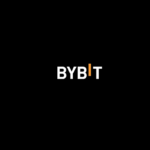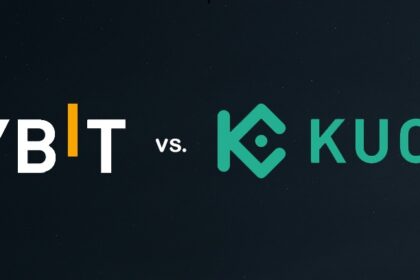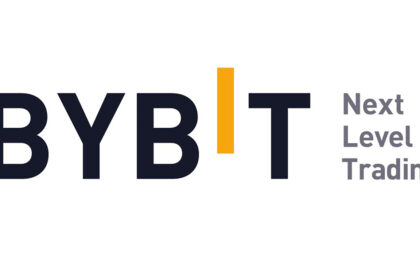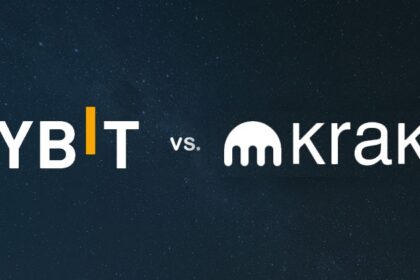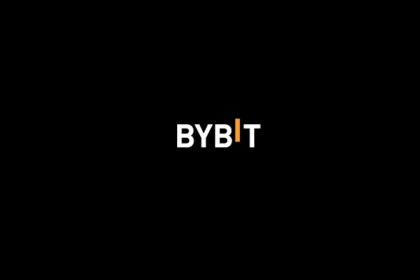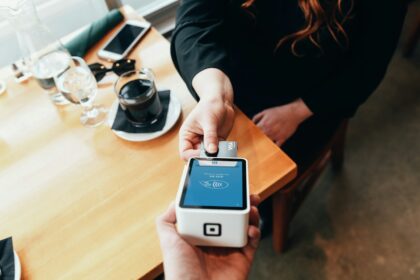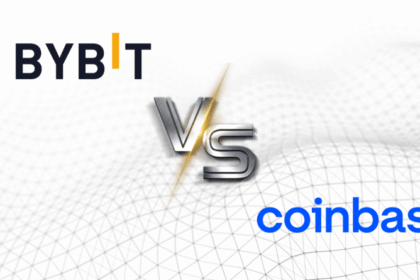Welcome to the world of cryptocurrency trading. It is a dynamic and often volatile market. You may have heard stories of traders making significant profits. You have probably also heard stories of major losses. One of the most powerful tools in a trader’s arsenal is margin trading. However, it is also one of the riskiest.
This article is a comprehensive guide. We will explore what margin trading is. We will discuss how it works. And most importantly, we will help you identify the best cryptocurrency broker for margin trading. Choosing the right platform is critical. It can be the difference between a successful trade and a costly mistake.
Margin trading allows you to borrow funds to open a larger position than your own capital would allow. This is achieved through leverage. For example, with $100 of your own money, 10x leverage allows you to control a position worth $1,000. This means your potential profits are amplified. But, and this is a huge “but,” your potential losses are amplified by the exact same amount. A small price move against you can wipe out your entire initial investment. This guide will help you navigate these waters safely.
What exactly is crypto margin trading?
Let’s break it down in the simplest terms. Think of margin trading like getting a short-term loan from your broker (the exchange) to make a trade.
You provide a fraction of the total trade value. This is called the “margin” or “collateral”. The exchange lends you the rest. This “loan” is what allows you to use leverage.
For example:
- You believe Bitcoin (BTC) is going to rise from $50,000.
- You have $500 to invest.
- If you trade normally (this is called “spot trading”), you buy $500 worth of BTC. If BTC goes up 10% to $55,000, your $500 is now worth $550. You made $50.
- Now, let’s use 10x leverage. You use your $500 as margin. The exchange lends you $4,500. You now open a position worth $5,000 ($500 your margin + $4,500 loan).
- If BTC goes up 10% to $55,000, your $5,000 position is now worth $5,500. You close the position, repay the $4,500 loan, and are left with $1,000. Your initial $500 made a $500 profit. That’s a 100% return, not 10%.
This sounds amazing. But what if the price goes down? If BTC drops 10% to $45,000, your $5,000 position is now worth $4,500. This is the exact amount you borrowed. The exchange automatically closes your trade to get its loan back. Your initial $500 margin is completely gone. This is called liquidation. You lost 100% of your capital on a 10% market move.
Key terms you must know
Before you even think about finding the best crypto margin trading exchanges, you must understand the language. Here are the non-negotiable terms.
Leverage
This is the multiplier for your margin. It’s shown as 2x, 5x, 10x, 50x, 100x, etc. Higher leverage means you borrow more money and put down less of your own. Higher leverage drastically increases both potential profit and potential risk. For beginners, anything above 5x or 10x is extremely risky.
Liquidation
This is the point of no return. It’s when the market moves against you so much that your initial margin is no longer enough to cover your losses. The exchange automatically closes your position to protect itself from losing money. You lose your entire margin for that trade. This is not a “margin call” like in stocks where you get a phone call. In crypto, it is usually instant and automated.
Long position (Going long)
This is the most common type of trade. You open a “long” position if you believe the price of an asset will go up. You are buying (with leverage) and plan to sell higher.
Short position (Going short)
This is how traders make money when the market is falling. You open a “short” position if you believe the price will go down.
How does this work?
- You borrow an asset (e.g., 1 BTC) from the exchange at the current price (say, $50,000).
- You immediately sell that 1 BTC for $50,000.
- You wait. The price drops to $45,000 as you predicted.
- You buy back 1 BTC for $45,000.
- You return the 1 BTC to the exchange and keep the $5,000 difference as profit (minus fees).
Margin trading makes this process simple. You just click “Sell/Short”.
Funding rate
This is very important for margin traders. Because you are not trading the actual asset (like in spot), you are trading a “contract.” The price of this contract needs to stay close to the real spot price. The funding rate is a mechanism to achieve this.
It’s typically a small fee paid every 8 hours (this varies).
- If the contract price is higher than the spot price (meaning more people are “long”), long positions pay short positions.
- If the contract price is lower than the spot price (more people are “short”), short positions pay long positions.
If you plan to hold a margin position for days or weeks, these funding fees can add up significantly.
Isolated vs. cross margin
This is a critical risk-management setting offered by the best crypto margin trading exchanges.
- Isolated Margin: The margin (collateral) for a trade is isolated to that single trade. If your BTC/USD long gets liquidated, it only takes the $500 you put into that trade. The rest of your account balance is safe.
- Cross Margin: This uses your entire account balance as collateral for all your open positions. This can prevent liquidation from a small price move, as your entire account backs the trade. But, if the market moves dramatically, it can liquidate your entire account. Beginners should almost always use Isolated Margin.
How to choose the right platform
Finding the best broker isn’t just about high leverage. It’s a balance of many factors. When you are shopping for a platform, here is your checklist.
Security and reputation
This is number one. Always. Does the exchange have a history of hacks? Do they offer Two-Factor Authentication (2FA)? Do they keep user funds in “cold storage” (offline, away from hackers)? Do they have an insurance fund to cover losses? Do they publish “Proof of Reserves” to show they have the funds they claim? Do not trade on an exchange that feels insecure.
Leverage options
More is not always better. A platform offering 125x leverage sounds exciting, but it’s also a sign of a high-risk environment. A good broker offers a flexible range. You want the ability to choose 2x, 3x, 5x, 10x, 20x, and so on. This allows you to manage your risk. If a platform *only* offers high leverage, it might be encouraging gambling, not trading.
Fees (Maker vs. Taker)
Fees will eat into your profits, especially with margin trading. You need to understand two types of fees:
- Maker Fee: You are a “maker” when you place an order that doesn’t fill immediately (like a limit order). You are “making” liquidity for the exchange. These fees are typically very low, or even zero.
- Taker Fee: You are a “taker” when you place an order that fills instantly (like a market order). You are “taking” liquidity off the books. These fees are higher.
Active margin traders aim to be “makers” as much as possible. Look for exchanges with low taker fees and ideally zero (or negative) maker fees.
Liquidity and slippage
Liquidity is crucial. It means there are many buyers and sellers on the platform at all times. High liquidity is good. It means you can enter and exit large positions without your own trade significantly moving the price.
The opposite of this is “slippage.” Slippage happens on low-liquidity exchanges. It’s when you place an order at one price (e.g., $50,000), but by the time it executes, the price has moved (e.g., to $50,050) because your own order “ate” all the available contracts at $50,000. This is a hidden cost. The best crypto margin trading broker have very high liquidity to prevent this.
User interface (UI)
When you are in a high-stakes, fast-moving trade, you cannot be fighting with the website. Is the trading terminal clear? Can you easily set your leverage, place orders, and—most importantly—set a stop-loss? Is the mobile app functional and stable? A confusing interface can lead to costly mistakes, like accidentally opening a 100x position when you meant 10x.
Available assets
What can you actually trade? Every margin broker offers BTC and ETH. But what if you want to trade newer altcoins? A good platform will have a wide selection of “perpetual contracts” (the most common type of margin product) for dozens, if not hundreds, of different cryptocurrencies.
Customer support
What happens when a trade gets stuck or you can’t log in? You need 24/7, responsive customer support. A live chat feature is a must-have. Waiting 48 hours for an email reply is unacceptable when real money is on the line.
Our top recommendations for traders
Based on the criteria above—security, low fees, high liquidity, and a great user interface—a few platforms consistently stand out. These are widely considered some of the best crypto margin broker available today. Our top picks are Bybit and Binance.
1. Bybit: The derivatives specialist
Bybit has built its reputation specifically on derivatives and margin trading. Its trading engine is one of the fastest in the industry, built to handle high-frequency trading without overloads. It’s an excellent choice for both serious beginners and advanced traders.
Key benefits:
- Excellent liquidity: Deep order books mean minimal slippage.
- Superior UI: Very clean, fast, and intuitive trading interface.
- Great customer support: 24/7 multilingual live chat.
- Testnet account: Practice with “paper money” before risking real funds.
- Generous bonuses: Often provides large bonuses for new users.
or
(Use code BYBIT3K for EU or BYBIT31 for Global to claim bonuses)
Bybit has focused intensely on being a “trader’s exchange.” They offer leverage up to 100x on major pairs like BTC and ETH. Their platform is known for its stability; during extreme market volatility, when other exchanges might “lag” or “overload,” Bybit’s engine tends to perform exceptionally well. This reliability is priceless. They also offer a wide range of perpetual contracts and a “Unified Trading Account” which simplifies the management of collateral across different products. Their fee structure is a competitive maker-taker model, rewarding traders who add liquidity. For anyone serious about margin trading, Bybit is often the first choice.
2. Binance: The all-in-one ecosystem
Binance is the largest cryptocurrency exchange in the world by volume. Its sheer size is its biggest advantage. It offers everything: spot, margin, futures, staking, launchpads, and more. If you want one account to do everything, Binance is the one.
Key benefits:
- Unmatched liquidity: The highest trading volume in the world.
- Huge asset selection: The widest variety of margin-tradable altcoins.
- Low fees: Fees are already low and can be reduced further by holding their BNB token.
- Complete ecosystem: Access all forms of crypto investing from one account.
- Leverage up to 125x: Offers very high leverage on certain pairs (use with extreme caution).
Binance’s “Futures” platform is where its margin trading happens. It is incredibly robust and offers a massive selection of pairs. If you want to margin trade an obscure altcoin, Binance is the most likely place to have it. Their liquidity means slippage is almost non-existent for most trades. The main downside? For a pure beginner, the Binance interface can be overwhelming. There are so many options and features that it can be confusing. It is a platform built for those who already have some trading experience. However, for its asset selection and low fees, it remains one of the best crypto margin trading exchanges on the planet.
Other strong contenders
While Bybit and Binance lead the pack, other exchanges offer excellent margin trading products:
- OKX: A very strong all-rounder with high liquidity, a clean interface, and competitive fees. It’s a close competitor to Bybit and Binance.
- Kraken: Known for its exceptional security and regulatory compliance, especially in the US and Europe. It offers margin trading (up to 5x) and futures, making it a safer, more regulated choice.
- KuCoin: Often called the “altcoin gem” exchange, it offers margin trading on a huge variety of smaller-cap coins. It can be riskier, but offers high potential.
Exclusive: Bybit registration bonuses
As our top-rated pick, Bybit offers significant bonuses for new users who sign up with a referral code. This is a great way to start your trading journey with some extra capital (though it should be treated with the same caution as your own money).
Bybit Bonus: Low fees
Bybit offers some of the lowest maker/taker fees in the industry, maximizing your profits on every trade.
Global Code: BYBIT31
EU Code: BYBIT3K
Register on ByBit EU with bonuses
Register on Bybit Global with bonuses
Bybit Bonus: High speed
Bybit’s powerful trading engine processes 100,000 transactions per second. Never get stuck in a trade due to lag.
Global Code: BYBIT31
EU Code: BYBIT3K
Register on ByBit EU with bonuses
Register on Bybit Global with bonuses
Bybit Bonus: 24/7 support
Get instant help when you need it most. Bybit offers 24/7 live chat support in multiple languages.
Global Code: BYBIT31
EU Code: BYBIT3K
Register on ByBit EU with bonuses
Register on Bybit Global with bonuses
Bybit Bonus: Up to $30,000
New users can complete tasks to earn a welcome bonus of up to $30,000 to use as trading margin.
Global Code: BYBIT31
EU Code: BYBIT3K
Register on ByBit EU with bonuses
Register on Bybit Global with bonuses
Feature comparison of top exchanges
Here is a simple table to help you compare our top picks at a glance.
| Exchange | Max Leverage | Key Feature | Fee Model |
|---|---|---|---|
| Bybit | Up to 100x | Fast engine, great UI, Testnet | Low Maker/Taker |
| Binance | Up to 125x | Huge asset selection, high liquidity | Very Low (lower with BNB) |
| OKX | Up to 100x | Strong all-rounder, good app | Low Maker/Taker |
| Kraken | Up to 5x (Spot) / 50x (Futures) | High security, regulated | Maker/Taker |
The dangers: A realistic look at margin trading
Let’s be perfectly clear: Margin trading is the fastest way to lose all your money in cryptocurrency.
The same 100x leverage that could theoretically double your money on a 1% price move will completely liquidate you on a 1% move against you. Crypto is an asset class where 5-10% moves in a single hour are common. This volatility is what attracts traders, but when combined with leverage, it is a recipe for disaster if you are not prepared.
Beyond the math, there is the psychological danger.
- FOMO (Fear Of Missing Out): Seeing a coin “pump” and jumping in with 50x leverage, only to buy at the exact top.
- Revenge Trading: Getting liquidated and immediately opening another, even larger, position to “win your money back.” This almost always leads to a second, larger loss.
- Overconfidence: Making a few successful trades and thinking you can’t lose, then upping your leverage and position size until you face one trade that wipes you out.
Tips for safer margin trading
If you are determined to try margin trading, you must do it with a strict set of rules. This is called risk management.
- Practice on a testnet. This is our most important tip. Platforms like Bybit offer a “Testnet” account. You can trade with “fake” money in the real, live market. Practice your strategy, learn the interface, and see how quickly you can lose money *before* you deposit a single dollar.
- Start with 2x or 3x leverage. Do not, under any circumstances, start with 50x or 100x. A 2x leverage trade is still twice as risky as a spot trade. Learn the rhythm of the market with low leverage first.
- Use a stop-loss order on every single trade. A stop-loss is an order you set in advance to automatically close your position at a certain price. This defines your maximum loss. For example, you go long on BTC at $50,000. You set a stop-loss at $49,500. If the price drops, your position is closed, and you only lose a small, defined amount. Trading without a stop-loss is suicide.
- Only trade money you can afford to lose. This is true for all investing, but it is 100 times more true for margin trading. Assume the money you deposit for margin trading is already gone. This will help you make logical decisions, not emotional ones.
- Have a plan. Do not trade based on a “feeling.” Your plan should include: 1) Why you are entering this trade. 2) Your target price to take profit. 3) Your stop-loss price to cut losses. If you can’t answer these three questions, do not open the trade.
Conclusion
Margin trading is a double-edged sword. It can be a powerful tool for amplifying gains, but it is an even more powerful tool for amplifying losses. Your success will depend less on high leverage and more on your discipline, risk management, and your choice of platform.
The best cryptocurrency broker for margin trading for you will be one that is secure, reliable, and has low fees. It should have a clean interface that you feel comfortable with and risk-management tools like stop-losses and isolated margin. For these reasons, Bybit stands out as our top pick, especially for its specialized platform and user-friendly design. Binance follows closely as a powerful all-in-one ecosystem with unmatched liquidity.
Whichever platform you choose from the best crypto margin trading broker please remember the risks. Start small. Use low leverage. And never, ever trade without a stop-loss.
Frequently asked questions
1. What is crypto margin trading?
Margin trading is a method of trading that involves borrowing funds from an exchange to open a larger position than your own capital would allow. This is done using “leverage.” It amplifies potential profits but also amplifies potential losses.
2. Is margin trading suitable for beginners?
No. We strongly advise against margin trading for absolute beginners. It is an advanced trading strategy. Beginners should first learn “spot trading” (buying the asset directly) and practice on a testnet account before ever risking real money with leverage.
3. What is liquidation?
Liquidation is the automatic closing of your leveraged position by the exchange. This happens when the market moves against you to the point where your initial margin (collateral) is no longer enough to cover your losses. You lose your entire margin for that trade.
4. How much leverage should I use?
If you are new to margin trading, you should start with the lowest leverage possible, such as 2x or 3x. Using 50x or 100x leverage is extremely high risk and will likely lead to rapid liquidation. Most professional traders use low leverage.
5. What are the best crypto margin trading exchanges for low fees?
Binance and Bybit are both known for very competitive fees. Binance fees can be reduced further by holding BNB. Bybit offers a very low maker/taker fee model, which is ideal for active traders.
6. How do I get a bonus on Bybit?
You can get a sign-up bonus on Bybit by using a referral code when you create your account. For users in the European Union (EU), the code is BYBIT3K. For users outside the EU (Global), the code is BYBIT31. You can then complete tasks in the “Rewards Hub” to claim your bonus.
7. Can I lose more money than I deposited?
On most modern crypto exchanges like Bybit and Binance, no. Your maximum loss is limited to the funds in your margin account (if using Cross Margin) or the margin for a specific trade (if using Isolated Margin). The system will liquidate you before you go into negative balance. This is different from some traditional stockbrokers.
8. What is the difference between “isolated” and “cross” margin?
Isolated Margin limits your risk to a single position. You assign $100 to a trade, and the most you can lose is that $100. Cross Margin uses your entire account balance as collateral for all open positions. This can prevent liquidation on small dips but puts your entire account at risk if a large market move happens.
9. Is Bybit better than Binance for margin trading?
It depends on the user. Bybit is often preferred by traders who *only* focus on derivatives because its platform is specialized, extremely fast, and very user-friendly. Binance is better for those who want an all-in-one platform to spot trade, stake, and margin trade hundreds of different altcoins from a single account.
10. What is the Bybit referral code for EU and Global users?
There are different codes depending on your location:
- For users in the EU (European Union): Use code BYBIT3K
- For Global users (outside the EU): Use code BYBIT31




